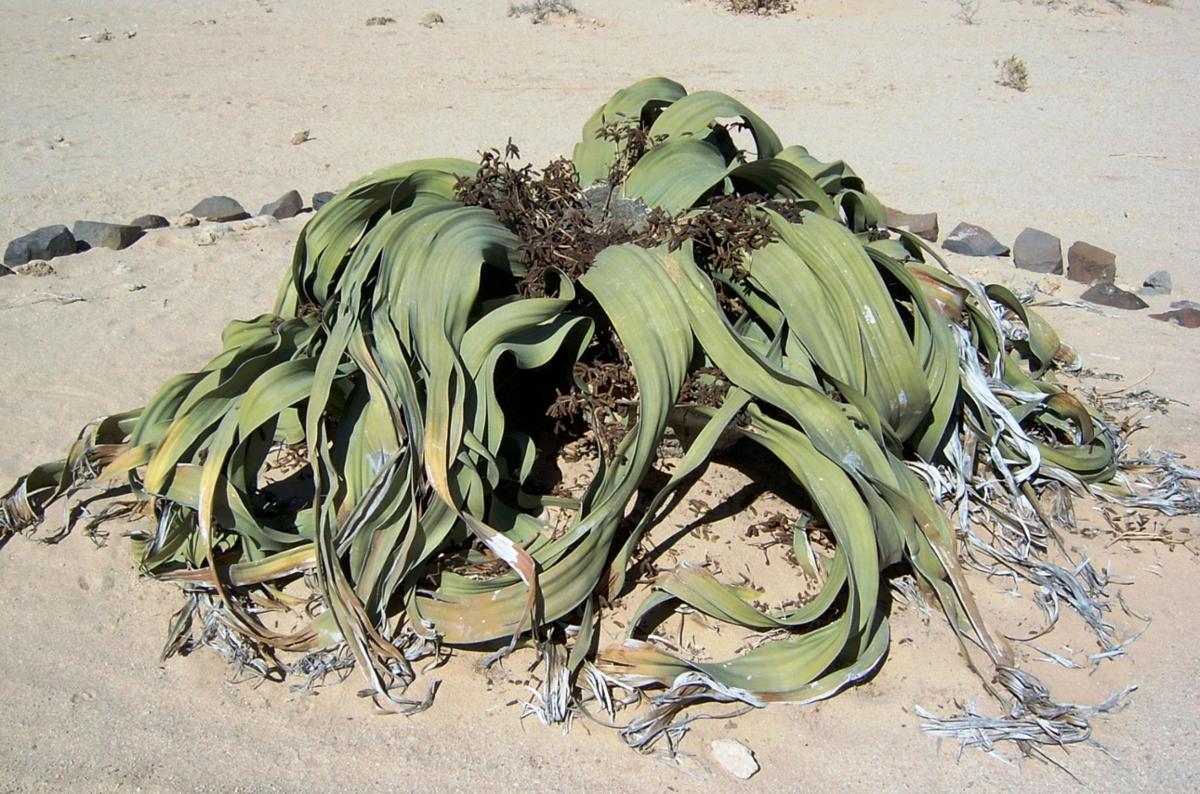Today’s Moment of Science wades into the wild world around us, examining a plant sometimes called wacky, weird, and wonderful: the Welwitschia mirabilis.
Don’t let our tongue twister of an introduction scare you away from the Welwitschia, which is by all accounts a remarkable organism. Coming across the plant in the harsh Namib desert of Angola and Namibia, botanist Friedrich Welwitsch is said to have fallen on his knees in wonder. Even its name expresses awe: mirabilis is Latin for “astonishing” or “miraculous.”
So what’s with all the hype? First, there’s simple longevity: Welwitschia can grow for thousands of years. Even its genetics are old, closely resembling those of its ancient ancestors, with many scientists deeming it a “living fossil.”
Second, there’s the staggering simplicity of Welwitschia’s existence. Despite living for millennia, a Welwitschia plant will grow two leaves—just two!—for its entire life. Wide, ribbon-like, and leathery, the leaves never stop growing, looping in curlicues outward from the squat, wide stem. Don’t be fooled by the Welwitschia’s withered appearance: though the leaves eventually fray all the way to the base, there really are only two of them.
The weathered and winding Welwitschia has sundry other marvels. It grows no flowers, instead producing seed cones from short, woody branches. And its desert habitat can receive less than two inches of rainfall per year. Yet the Welwitschia thrives, likely pulling moisture from fog and groundwater.
Has the Welwitschia wowed you yet? If so, you’re not alone. The Welwitschia is sought after by botanical gardens and poachers alike. But the plant is nothing if not a survivor: Where there’s a Welwitschia, there’s a way.










